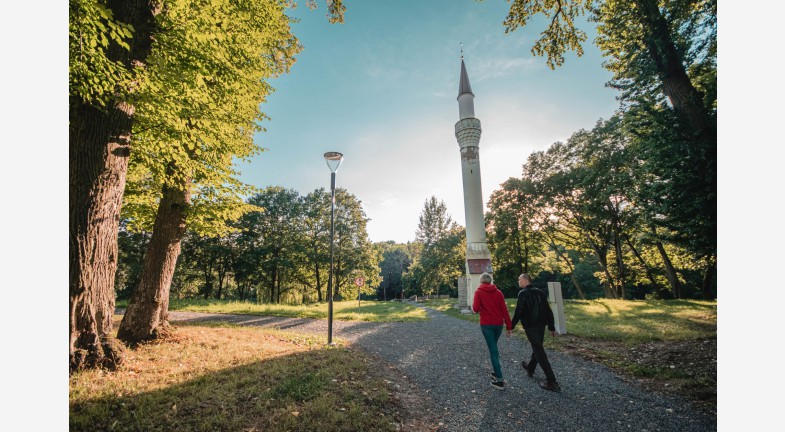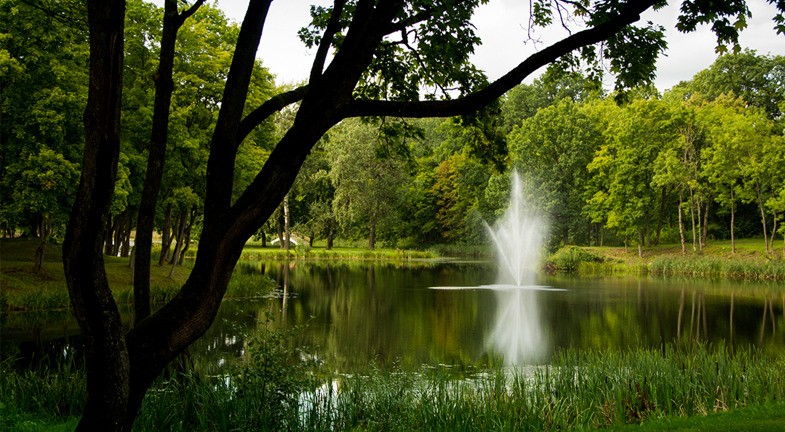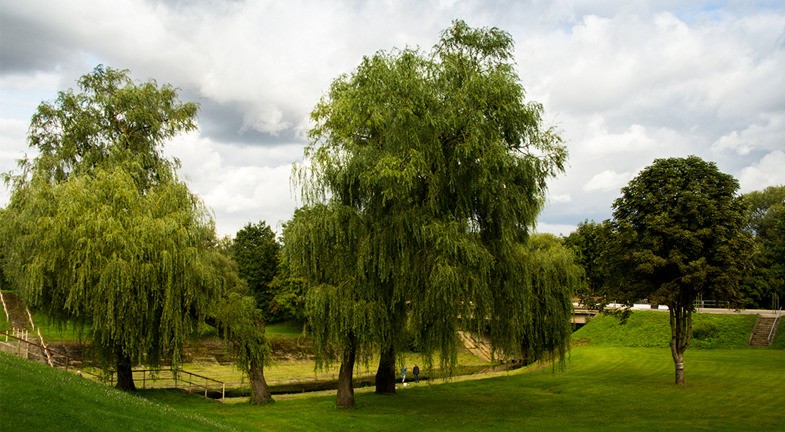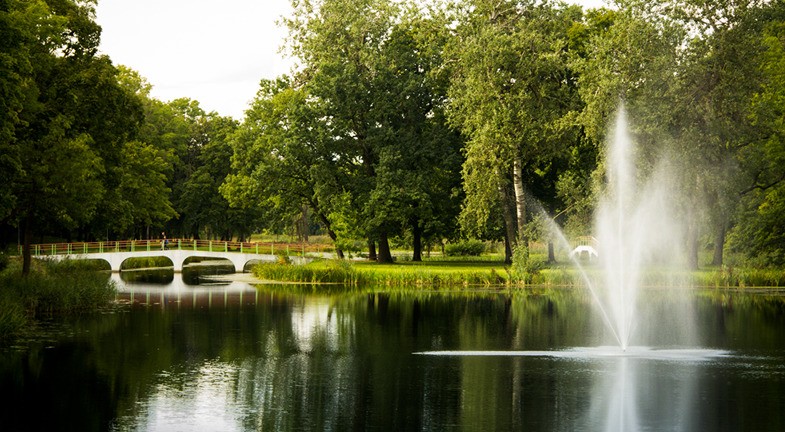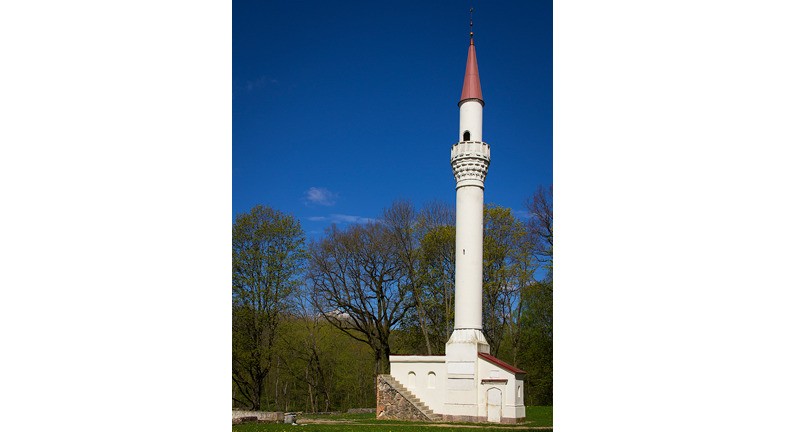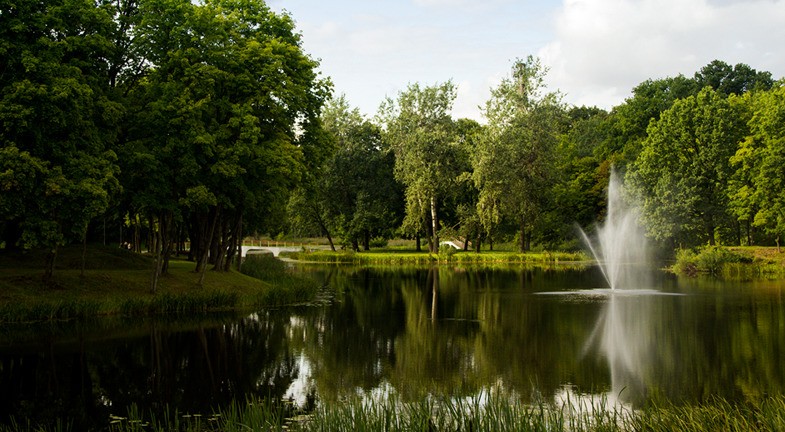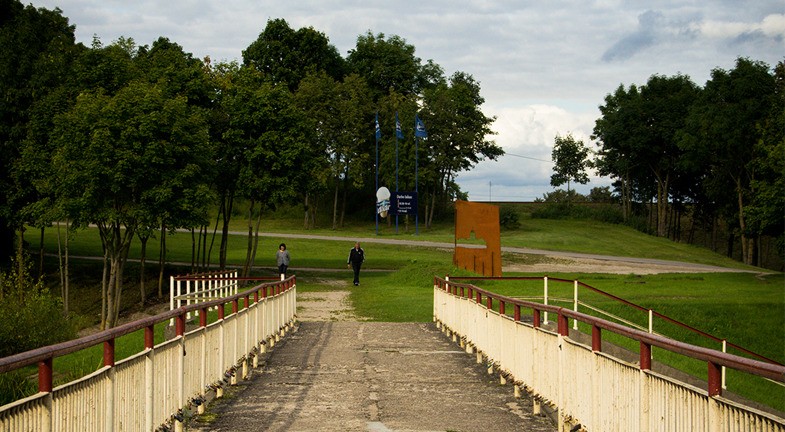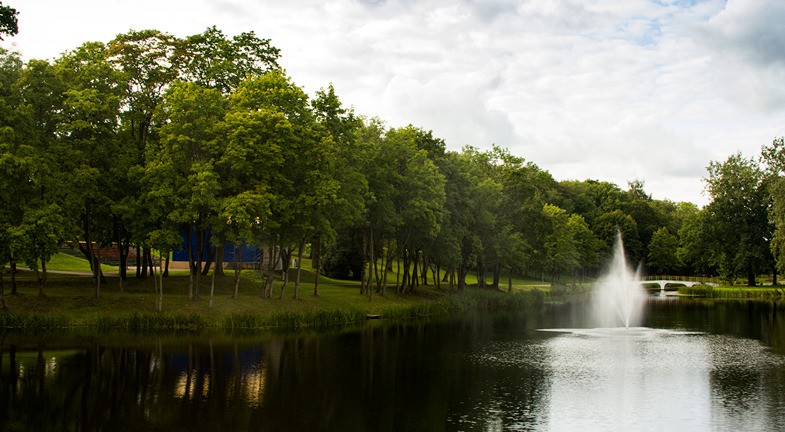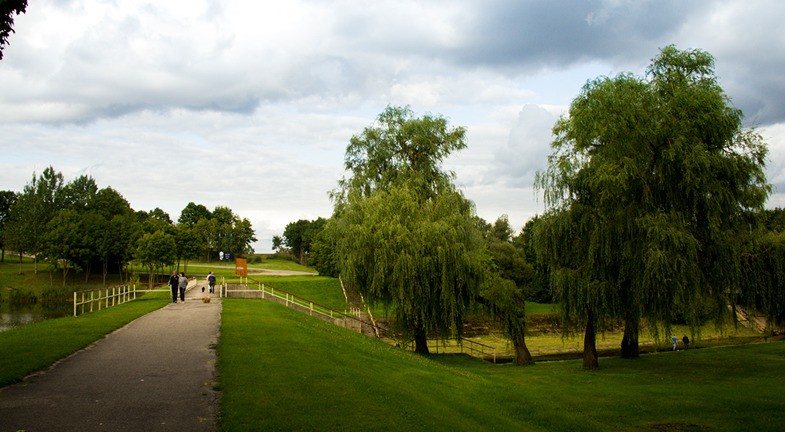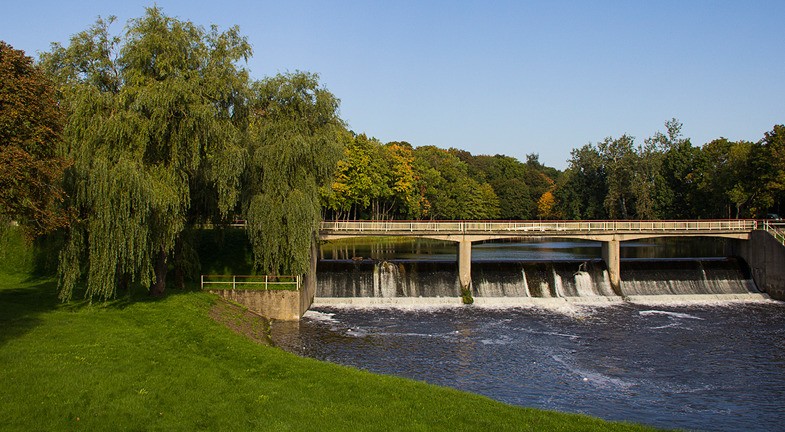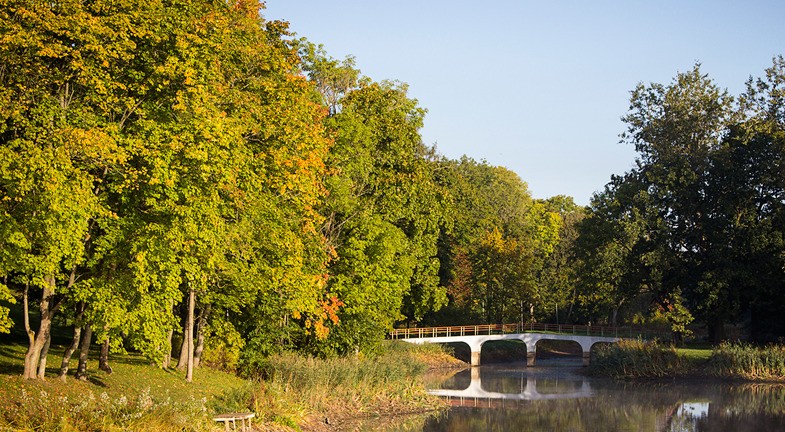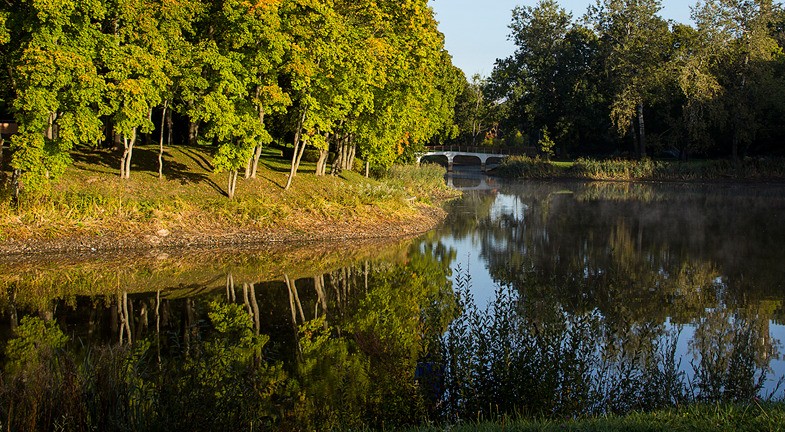Kėdainiai Town Park is situated in the former Kėdainiai Manor garden. The remaining manor homestead complex is comprised of the minaret, south and north cellars, gates and the park. After the 1863 Uprising, the manor was confiscated from Čapskis and was given to a Russian army general of German origin, Count Eduard Totleben. E.Totleben reconstructed the manor house, re-planned the park, and built a 28 m high minaret in 1880 to commemorate the Crimean War. According to one legend, the general built it for his muslim wife, while another legend says that the exotic building was built for his lover, and a third legend states that the minaret was brought from the Bulgarian city of Pleven: the general often visited it during the war between Russia and Turkey in 1877–1878 and would sleep on its stairs when tired. The building was most likely built from the general's sentiments of the Balkans. The owner of Kėdainiai and its surroundings showed the park and his lands to guests from the minaret. The general stored items glorifying his past in the mosque and the ayvan. The height of the minaret is 28 metres. Eventually, it became a place for romantic meetings. In 1944, the palace was bombed by Germans. The minaret, gates, cellar parts, and the picturesque 19th century park remained. Pedestrian and bicycle paths were built in the park. The entrance to the park is from the side of J. Basanavičiaus str. The park can be reached from the train station by walking through the railway crossing, where the minaret is nearby.
Address
S. Dariaus ir S. Girėno str. 5, Kėdainiai


